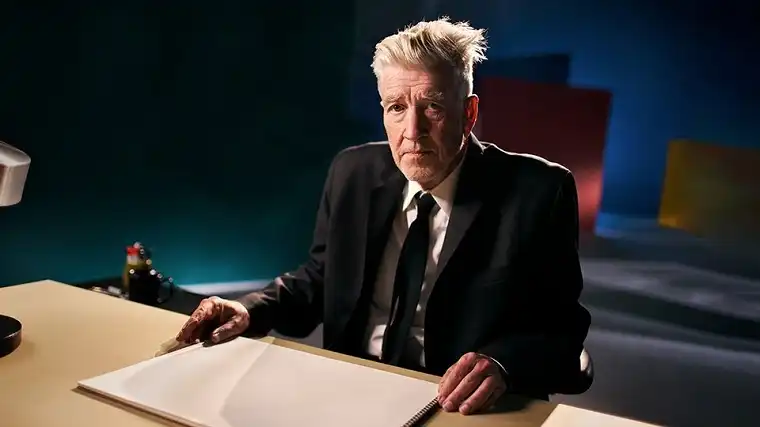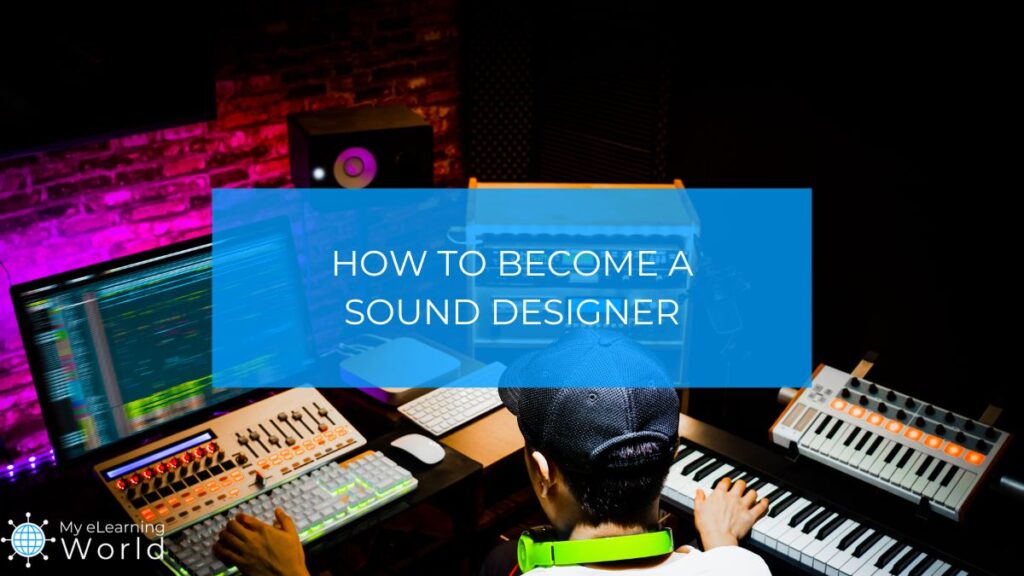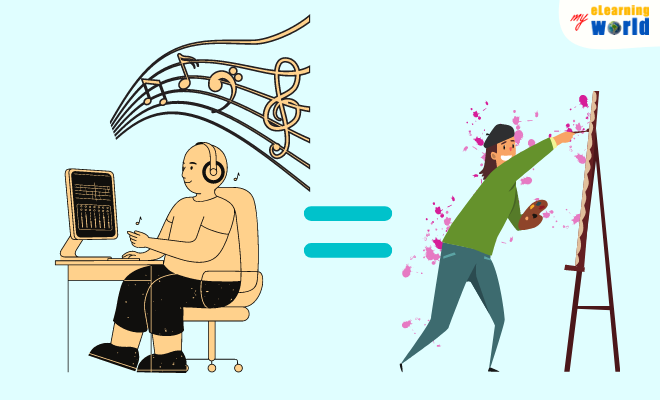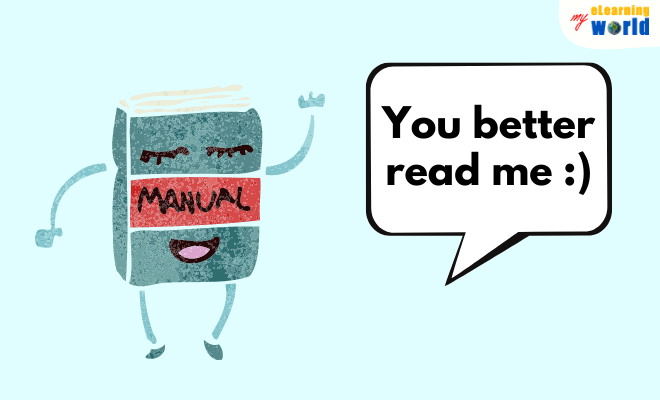Do you want to learn sound design? Are you wondering how to become a sound designer for movies, TV, video games, and other media?
When it comes to media production, there’s a lot that goes on behind the scenes to make a movie, TV show, or online video look perfect.
While plenty of attention is given to the visual aspects of media production, you may not realize that just as much goes into the sound design as well.
But just what is sound design? What does a sound designer do? To take things a step further, if you’re an audio enthusiast, you may be wondering how to learn sound design and make it a career.
In this article, I’ll answer these questions as well as:
- What tools are used in sound design?
- What resources can you use to learn sound design?
- How do you become a sound designer?
- Where do sound designers work?
- How much does a sound designer make?
Read on to learn how to become a sound designer who gets great gigs across the different types of media.
What Is Sound Design?
In a nutshell, sound design is the creation and crafting of sound. Sometimes, this task is left up to a single individual, but other times, a sound designer will work with a team of creative professionals.
I go into more detail below, but the goal of designing sound is to create an overall theme or set of feelings that utilize audio like a sonic paintbrush. Much like an artist chooses colors when creating a painting, sound designers use audio to paint a sonic landscape.
You may be surprised to learn that you’re already adept at designing sound if you have ever worked with audio production. Crafting sound elements and developing sonic themes is all about looking at the big picture.
I’ve worked on many recording projects over the years, including some for major media clients and large production studios. Throughout all of them, I’ve found myself going back to the basics of sound design in order to create a unique audio experience.
At its core, sound design is made up of two different functions: the actual creation of new sounds and the development of audio themes that are used throughout a piece of media. The former relies on audio production skills, but the latter is focused more on the overall psychology of sound as it pertains to generating emotion.
In other words, sound design is the process of using things like synthesizers and recording hardware to make sounds. At the same time, it’s the process of mixing in sound to match the feeling of what is taking place on screen or on stage.
There’s often overlap between sound design, creative directors, sound directors, film producers, and editors. This is because a sound design professional will need to work closely with other production team members to incorporate created audio into a final piece of media.
In this video, the sound designer Tyler Mitchell from Once Upon a Synth talks about how synth settings can be tweaked to create unique sounds.
When creating sounds using synthesizers, you’re probably going to be using envelopes. Specifically, you’ll be changing parameters that include attack, delay, sustain and release (ADSR) of a particular frequency. It would be a good idea to familiarize yourself with these four concepts before diving into heavy synthesis production.
Where Is Sound Design Used and For What Purposes?
Sound design is used in virtually all forms of media, but it plays a more prominent role in movies, television shows, and game development.
You’ll also likely find a sound design team working on live performance art like plays and stage shows.
When it comes to pure audio, someone who works as a sound designer may also be responsible for creating sounds to be used in music.
When doing this, software and hardware settings are often manually adjusted to dial in specific tones and effects to make unique sounds that fit the intended purpose of a creative vision.
At times, the goal of sound design in music is to create unique audio that can’t be easily replicated by another artist. This may be achieved by manually tweaking settings in a software synth instead of using presets that come with the software.
How to Learn Sound Design
When searching out how to learn sound design, there are many paths you can take. The process of creating sounds and incorporating them into media productions can be learned through experience, but it can also be taught.
Take a Class
 David Lynch Masterclass
David Lynch Masterclass
In this MasterClass from legendary filmmaker David Lynch, you'll learn everything from how to craft a great narrative to sound design to cinematography and more.
The best thing you can do if you want to know how to become a sound designer is to take a course.
Many audio enthusiasts take courses in sound design to learn the principles behind how sound is created, shaped, and manipulated. Courses are available through specialty schools like Full Sail University, but they are also taught through traditional institutions like Berklee College of Music.
Not only that, you can take online sound design courses from the comfort of your home, learning from some of the world’s top experts in the field.
Some of our favorite sound design courses include:
- David Lynch Teaches Creativity and Film (has a detailed lesson on sound design)
- Mastering Sound Design – How to Build Better Soundscapes for Your Video
- Ultimate Sound Design Complete: Mastering Sound Design
All of these courses are great for aspiring sound designers, as they will help you get a better understanding on the different elements of sound design and how to use them in your work.
Learn From the Experts
Another way to learn the principles of audio design and creative direction is through books like, “The Sound Effects Bible,” by Ric Viers or publications like Sound on Sound Magazine. These resources provide opportunities for budding sound designers who prefer a more self-guided approach to learning.
Learning from experienced sound designers who have worked on major projects is a great way to get inspired and learn from professionals who have been successful in their careers.
Check Out YouTube Videos
YouTube offers a wealth of videos on sound design as well. Through video lessons and discussions on how to learn sound design, you have the chance to not only see and hear how different audio is created, but you also have the chance to ask questions and offer feedback through the comments section if enabled.
Speaking of YouTube videos, in this video, Michael from In The Mix discusses sound design and synth fundamentals that you can use to create your own unique audio for music projects.
Synthesizers, including both digital and analog models, typically generate sound through frequency oscillators. The concept behind this technology involves creating an electronic signal that changes in frequency based on an oscillating circuit that opens and closes at a particular rate.
This can then generate sound when processed digitally and sent to an audio output. Some synths have a single oscillator, but others incorporate multiple oscillators at once to create lush, complex sounds.
Experiment With Your Equipment and Software
I always encourage those I teach to experiment and find their own path as a way to learn. When it comes to designing sound for media or for a music project, there are a number of things you can do to learn more about how the sound design process works, including:
Read Your Manual
As I mentioned above, designing sounds is often done through manipulation of settings in software or on a piece of audio hardware. In order to know what settings to change or how the settings will affect the sound, I suggest you read through any manual or technical documentation that came with your gear.
Explore Presets
Although using presets isn’t technically sound design since a preset has already been designed for you, you can learn some sound design principles by exploring presets that come with your software synths and effects. Try loading up the default state preset, take note of the settings, and then load a different preset to see what’s changed to learn how different controls affect the sound.
Experiment With Effect Plugins
Effect plugins can dramatically change a sound and make it unique. I find that when I’m working in sound design and feel like I’ve run out of original ideas, loading up some effect plugins and experimenting with audio manipulation can open up new sonic possibilities.
Experiment With Microphones
If you’re recording audio to be used in a project instead of just using synths to generate sound, consider using different microphones to change things up.
For example, an omnidirectional microphone can be used to capture sound from all around, so this might be a good choice if you’re recording ambient sounds to be incorporated into the background of a scene. You can learn more about some of the best omnidirectional microphones in this article.
Read Forums
I also recommend forums and message boards as a way to learn new things. One of the nice aspects of these resources is that you don’t even have to participate in order to learn.
Many audio design forums are full of questions and answers that can help you learn without having to even create an account. In fact, you may be surprised at just how many people out there have the same questions as you do.
Finding a Career in Sound Design
While knowing how to implement sound design principles is great for personal projects, you may want to take things a step further and turn your passion for audio into a career.
Working in the sound design field can be an exciting prospect since you’ll likely always be creating and discovering new ways to tell a story through sound.
If you’re looking for some direction, below are some common ways to break into the industry:
Create a Portfolio
One of the first things you can do when looking for a career in sound design is to create a portfolio of your work. This portfolio can feature sounds you’ve created, examples of any real-world projects you’ve worked on as well as demo projects you’ve created on your own.
A portfolio doesn’t have to have professional examples, especially if you’re just starting out. The goal, however, is to highlight your ability to create sounds and demonstrate an understanding of how audio can be incorporated into the sonic storytelling process.
I recommend creating a YouTube channel if you’re interested in working with sound design for film, television, game development, or other video media. You can host examples of your work or create spec demo videos to showcase your talent.
In this video, the sound designer Bryn North from MrBrynnorth talks about how audio design can be used in cinematic trailers to generate emotion and drive a story forward.
If you’re designing sound elements for film, you may or may not have a score to work with. If you do not have a score yet, try to remember that your sounds will be implemented alongside dialogue, sound effects, ambient noise, and possibly music.
This means that your contribution should sit nicely in the mix without taking attention away from audio elements that are important to the specific scene.
Work as a Freelance Sound Designer
You can also look for freelance work on your path to becoming a sound designer. This usually means approaching potential clients and selling your services as a sound designer.
Some audio production studios will hire freelance sound designers to come in and work on aspects of larger projects when they are short on staff.
A film production company may also bring on freelancer sound designers to work on individual projects or to collaborate with existing staff on a larger project.
Apply to Job Openings for Sound Designers
Of course, you can also look for traditional job openings for sound designers at film studios, video game development companies, media production facilities, and similar businesses. Most of the time, the application process for these jobs will be handled online, and you’ll usually have the chance to submit a link to your online portfolio or links to examples of your work online.
If you’re interviewed for a position, the interview may take place online as well. When conducting an online interview, make sure you have a suitable camera as well as a good mic.
I recommend using the Blue Yeti due to its USB capabilities and sound quality. You can learn more about adjusting sensitivity levels when using the Blue Yeti in this article.
How Much Does Sound Design Pay?
Your pay as a sound designer can vary based on a number of factors, including the type of project you’re working on, any contracts involved in your employment, your location, and the amount of time and work required.
Some projects provide compensation based on a per-project basis. This means that you will get paid a fee based on the project, regardless of the time it takes or how much work you put in.
Other times, you will get paid by the hour as a sound designer. In this type of arrangement, you will be paid only for the hours you work, and overtime may or may not apply.
Still, other situations may pay based on salaried employment. This may be the case if you’re the in-house sound designer at a production studio or record label.
Sound Design Payscale
According to online metrics from tracking sites, sound designers can expect to make the following:
- $34,000-$97,000 base salary
- Up to $15,000 in bonuses
- Potential for up to $28,000 in profit sharing
- A total pay of $34,000-$140,000 per year
Pay for sound designers is often based on experience, and it can also differ based on the publicity of the project. A high-profile project with a large budget will likely pay much more than an independently funded project.
Similarly, your pay will be higher in an area with a higher cost of living. If you’re freelancing, you may have more freedom, however, to set your own rates.
Creating sound for film often requires attention to detail. In this video, Artlist offers a step-by-step guide to creating sound effects and sonic elements to drive story pieces forward without the need for a lot of music production.
I often encourage my students to utilize storyboards as a way to track a scene and develop ideas for audio elements. Planning ahead by knowing what will be coming up can help you avoid designing soundscapes that do not transition well from one story beat to the next.
Useful Resources for Aspiring Sound Designers
- What is sound design for film? Definition and examples
- Sound design. Everything you need to know
- The history of sound design
- How to capture meaningful and Efficient Field Recordings
- How to change mic sensitivity
A Final Word on How to Become a Sound Designer
As an aspiring sound designer, you need to be open to creative possibilities!
In the end, the answer to how to learn sound design is creativity and experimentation. As such, never limit yourself to convention simply because someone else did something one way.
I recommend experimenting with different settings, different microphone placements, different acoustic properties, and more. The best sound designers will tell you that there’s no substitute for learning by doing.
In fact, you can even experiment with your recording space by using things like acoustic blankets to create unique effects. To learn more about some of the best acoustic blankets for audio recording and sound design, you can read my reviews in this article.
Have any questions about how to become a sound designer? Share your thoughts below.
- Elevating Your Virtual Presence: Why EMEET’s SmartCam S800 Stands Out in Modern Communication - 06/04/2025
- US Teachers Will Spend $3.35 Billion of Their Own Money on Classroom Expenses in 2025-25 School Year - 06/04/2025
- Report: Leveraging AI Tools Could Help US Teachers Avoid $43.4 Billion of Unpaid Overtime Work - 06/04/2025


















